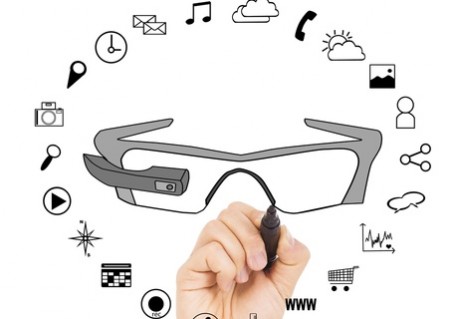Can North’s Focals Succeed Where Google Glass Failed?

For many in tech Google Glass is a cautionary tale about the dangers of hype. When it arrived in 2013, there were no shortage of people who were certain it was going to be the next big thing — the phrase “the new iPhone” go thrown around a lot and as of January 2014 many people were predicting it would be the hottest gift item of the following Christmas in 11 months.
That, however, is not quite how things shook out for Google Glass. The device was expensive, glitchy, had a short battery life and was often described as dorky looking. There were also lots of privacy concerns connected to that smart glasses product. Instead of reaching the masses, Google Glass was quietly abandoned by Google and consigned to the Museum of Failure.
But just because something didn’t work six years ago doesn’t necessarily mean that it can never succeed — and the company North believes that smart specs deserve a second run at greatness, particularly if it can find ways to fix those things that consigned Google Glass to the dustheap of technical history. And so — after a high-profile introduction at CES last week — North is hoping to put its Focals smart glasses products into the hands of consumers.
“We really wanted to design them to look like glasses, because we believe that when you put something on your face it’s a real emotional choice, it’s not like a phone where they all look the same. When you put them on, the result is more or less wearing a normal pair of glasses,” said Alexander Ingram, head of communications for North.
Normal, if a bit on the oversized side, Focals for consumers are custom measured so they work appropriately for their wearer. They are designed to look and feel exactly like a pair of regular glasses, according to Ingram — which means they don’t come with a touchpad or camera. The projector is mostly hidden behind the right-hand lens, onto which it projects the Focals user interface.
The experience of using the screen in the smart glasses has been compared to the display of a car dashboard and the graphics do not appear immediately in front of the users’ eyes, but give the impression of floating in space about 2 feet from the users.
To interact with the images, Focals come with “the Loop,” a ring worn on the finger with a tiny four-direction joystick protruding slightly from its side. This is used to navigate through the glasses’ menu system.
The goal for Focals, in some sense, is invisibility. While they are meant to be functional, that functionality is meant to be discreet and mostly out of the way. The glass aren’t always active and for the majority of the time people are wearing them the odds are fairly good that they projector will actually be switched off. But when something important comes through — when there is a message a wearer would want or need to see — Focals are there to fire up and present the data.
Present, and present it quickly. Walking around with a bunch of data floating in one’s field of vision is not a great experience, which means those alert flashes are fast, a few second at most, enough to make the wearer aware, but not enough to be a hindrance or distraction.
Focals are also built to be Alexa-compatible — meaning that Alexa users can now talk with their glasses and use them to make requests of the AI assistant to do things like control smart home features.
Will Focals succeed where Google Glass failed?
Google had a lot of misses with its smart glasses — from design, to usability, to properly managing expectations around them. Focals have alleviated or at least mitigated many of those issues.
But …
Focals’ utility and usability is a bit similar to the types of things smartwatches currently do — from pinging with alerts to smart home management capability. Wearables in general and smartwatches in particular have had some difficulty ginning up the kind of enthusiasm that smart phones did at first — though they are making progress as the technology that underlies them is improving. Consumers are warming up to them.
Will consumers want to swap a wearable for the wrist for one for the face?
Focals made a big impression at CES, and netted a lot of praise. The proof of whether that praise will lead to retail sales will only be available when Focals hit the market and are ready for mass consumption.
